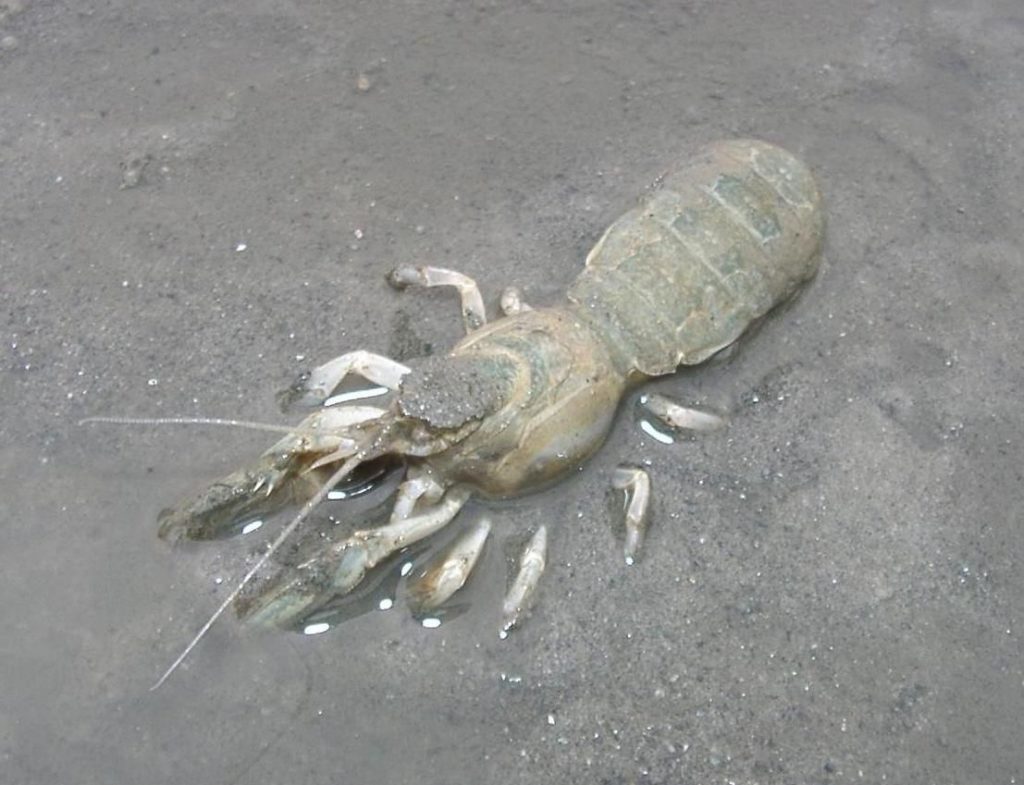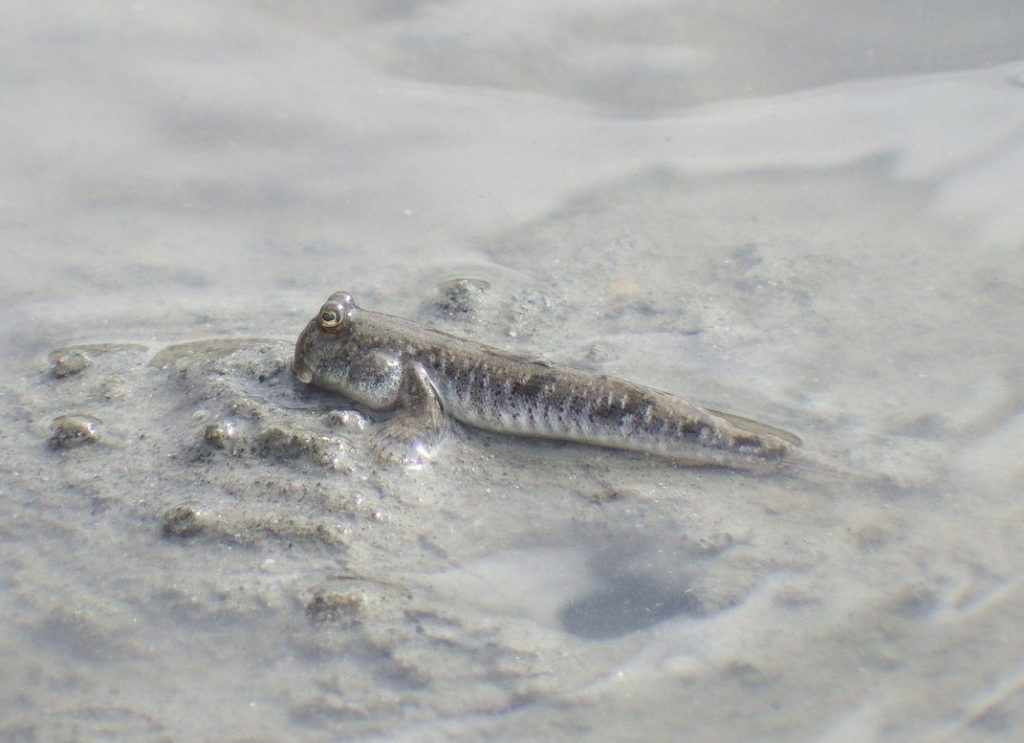
Thousands of Holes
At first glance, nothing seems to be living in the mud flats, but when you get closer, you will see countless holes on the surface. In fact, there are many living creatures in the mud.
Bivalves, Clams
~Photo of a Littoral Spoon Clam~
If you dig in the mud, you will find bivalves. They include the well-known freshwater clam which is used as an ingredient in miso soup, the large, roundish-shaped Chinese Venus clams, and the translucent, thin-shelled littoral spoon clams. You can also find slender, string-like lugworms and ribbon worms.


Mud Shrimp
Perhaps the most representative inhabitant of the Fujimae tidal flat is the mud shrimp, a 10-centimeter-long creature said to dig a burrow more than 3 meters long. It was given the name “anajako” because it resembles the well-known sushi ingredient, “shako,” the Japanese mantis shrimp, and lives in a hole or “ana.” It comes out when the tide recedes and feeds on the microalgae that covers the surface of the tidal flat.
Shuttles Mudskipper
There are reed beds along the riverside. A typical creature that can be observed in the reed beds of Fujimae tidal flat is the shuttles mudskipper. They can crawl on the mudflats using their well-developed pectoral fins, and as their name suggests, they can also move about by jumping.


Asian Shore Crab (hemigrapsus penicillatus)
If you look at the surface of the stones along the shore, you will find barnacles and brackish water snails attached to them. Asian shore crabs hide underneath the stones.
